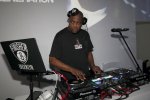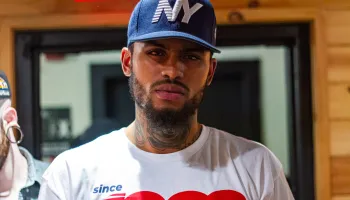This week, California officials granted media rare access into San Quentin’s death row unit where more than 700 inmates are housed, and an $853,000 death chamber sits unused. For nearly a decade, debates over capitol punishment have paused executions at the prison, which has the largest number of death row inmates in the country.
Reports SF Gate:
For the first time since the death penalty was put on pause in the state, reporters on Tuesday got an in-depth look at the cold concrete corridors, locked cells and shackled inmates on California’s ever-growing Death Row.
“I don’t think I’ll ever live long enough to get out of here,” said 67-year-old Douglas Clark, who’s been in San Quentin since 1983. “But you get by. I’ve always been a very Zen person.”
Clark, an aging man with long, gray hair and an eye patch, looked little like his much-younger self — a serial murderer dubbed one of the “Sunset Strip killers” for a series of particularly grisly slayings in Los Angeles in 1980. He spoke Tuesday from inside a cell in the prison’s Adjustment Center, known by inmates as “the hole.”
Prisoners sent to the 102-cell hole are isolated because of their bad — usually violent — behavior in the main cell block, and are given limited time to exercise in outdoor metal cages.
In the yard Tuesday afternoon, inmates worked out in 8-by-10-foot, chain-link corrals while armed guards kept a watchful eye from above. Many of the prisoners spoke openly about their cases and have closely followed the state’s unresolved laws on capital punishment.
In recent weeks, supporters of two competing ballot initiatives — one seeks to scrap executions, while the other is trying to fast-track them — were cleared to gather signatures in hopes of changing the state’s laws. “We are just left on a shelf, and that’s worse than being executed because you’re just waiting to die,” 42-year-old Robert Galvan said while taking a break between sets of pull-ups in his cage in the Adjustment Center’s yard.
Since 1978, when the Legislature re-enacted the death penalty, only 13 inmates have been executed, while more than 100 have perished from other means inside the prison walls.
A couple of doors down from Lewis was Richard Allen Davis, who got a death sentence for the 1993 abduction and killing of 12-year-old Polly Klaas in Petaluma. The now-feeble convicted child killer hid inside his dark cell while reporters walked by — a stark change in behavior from his antagonistic courtroom theatrics that played out during his 1996 sentencing.
One tier above, convicted killer Andre Burton screamed from his cell.“They’re treating us like animals!” he shouted. “We’re not horses and cows and sh*t. There’s no sun, no hot water, they’re giving us spoiled milk.”
Scott Peterson, the Northern California man convicted of murdering his pregnant wife, Laci, and their unborn son, turned his back to the media during the tour. Previous reports unveiled the plush life Peterson enjoys (by prison standards) behind bars. He’s housed in the prison’s North Segregation, an area where well-behaved inmates are mostly allowed to walk freely, enjoy the basketball court, facilities “protected from the sun by a roof,” and “million-dollar views of the San Francisco Bay.”
The last and oldest man to be executed at San Quentin was 76-year-old Clarence Ray Allen, in 2006. Allen, convicted in the 1970s of ordering three murders, was denied his final appeal arguing that execution of a frail elderly person was cruel and unusual punishment. His last words were,“It’s a good day to die. Thank you very much. I love you all. Goodbye.”
Before Allen it was Stanley “Tookie” Williams, the reformed Crips founder convicted in various murders. Williams maintained his innocence to the very end, but a clemency appeal was denied by former Gov. Arnold Schwarzenegger in 2005. Williams was executed in December of that year.
—
Photo: screenshot















